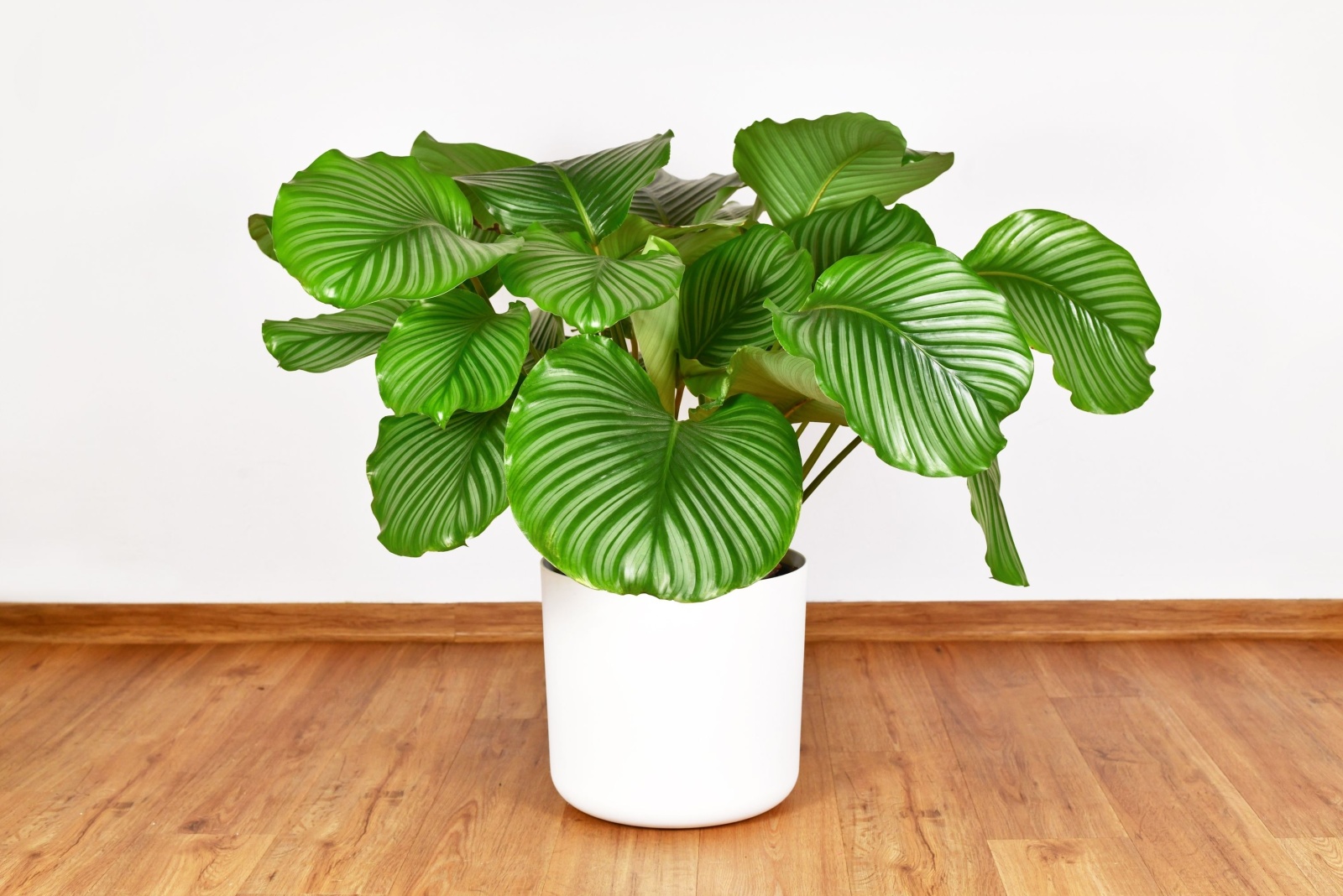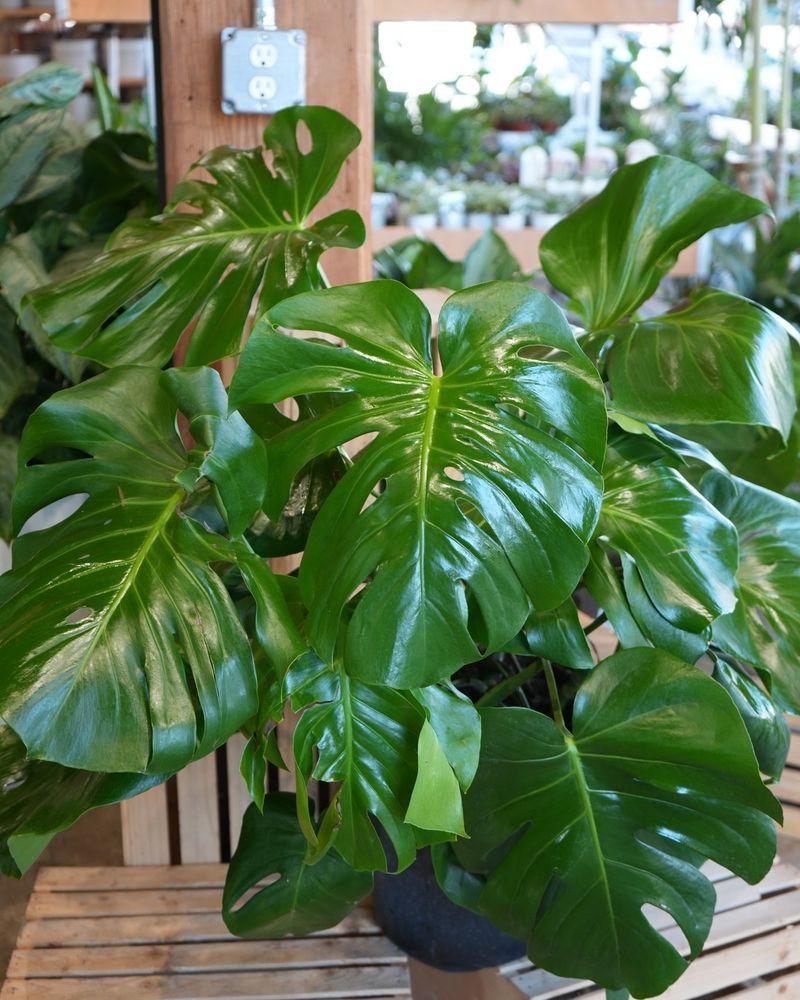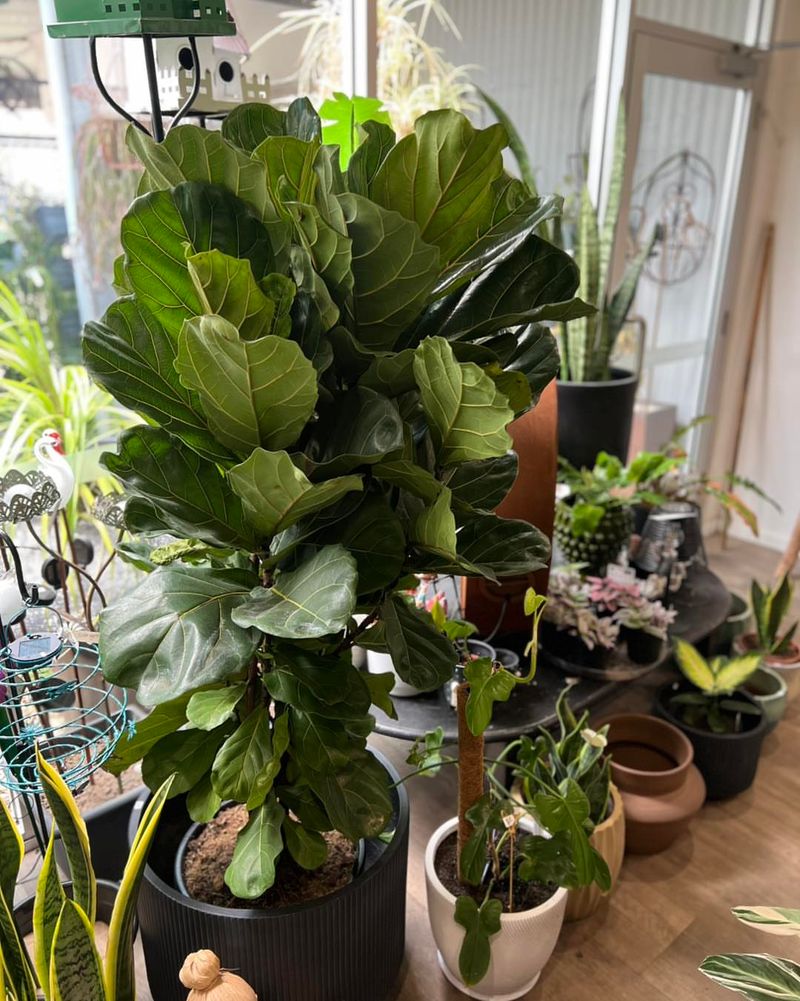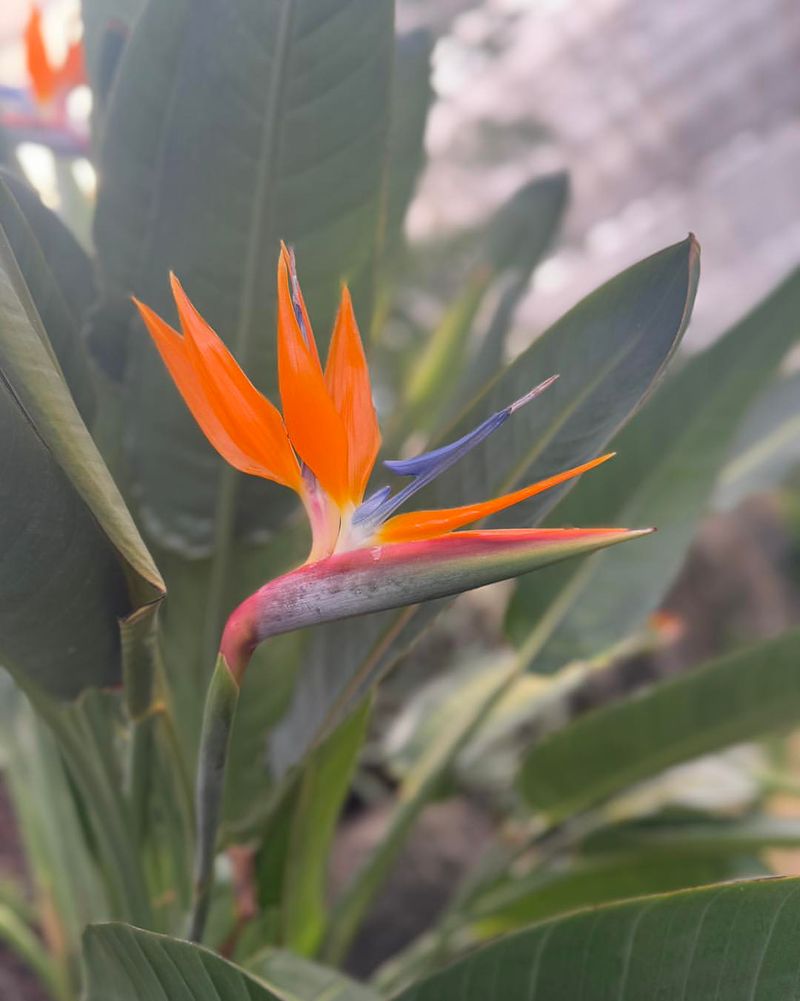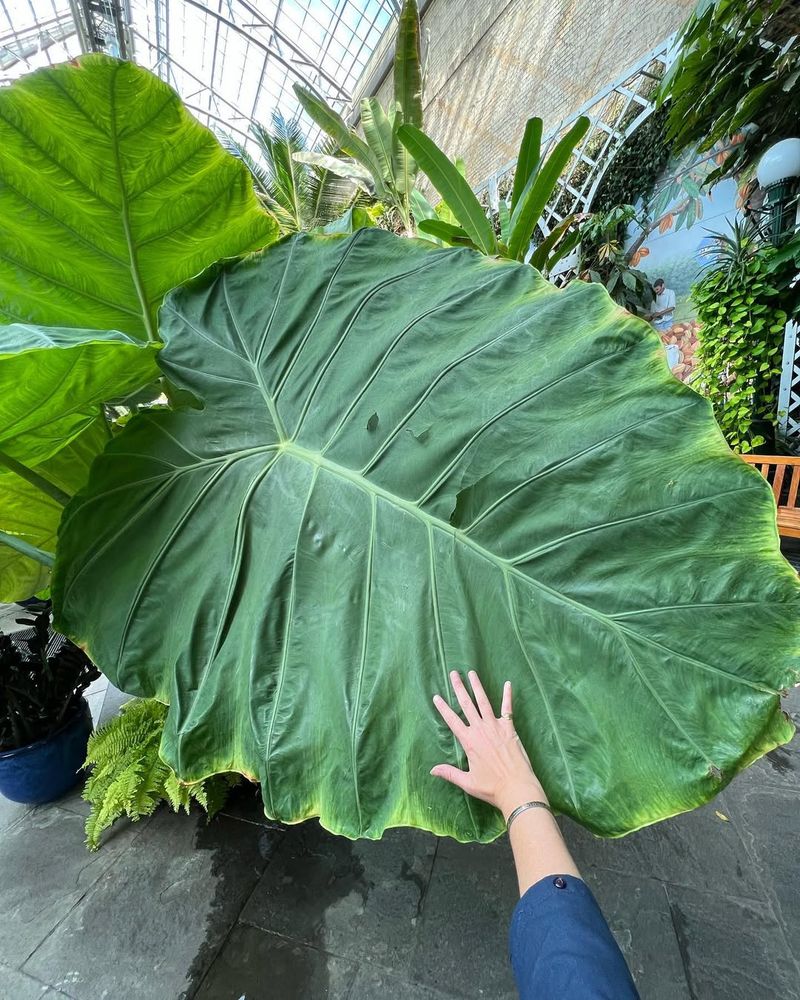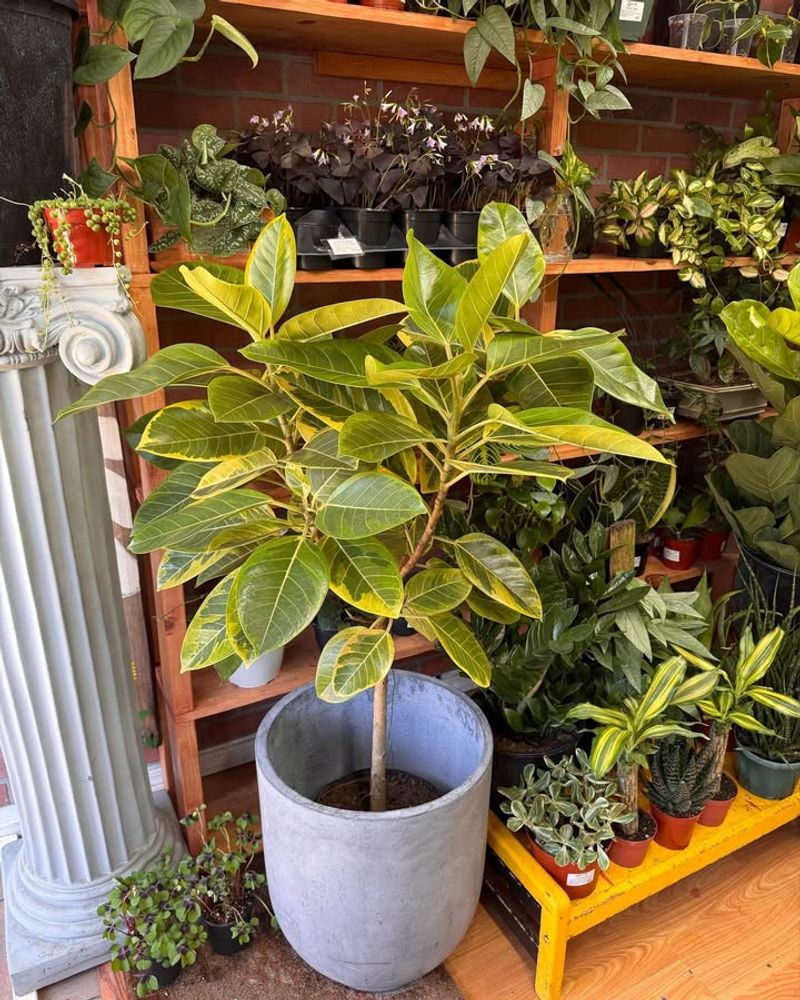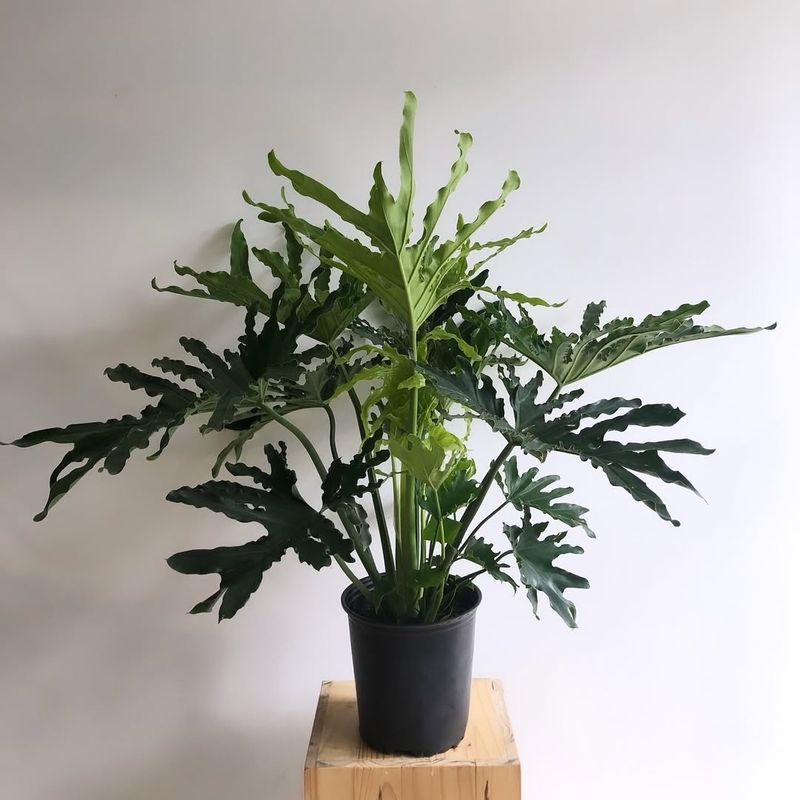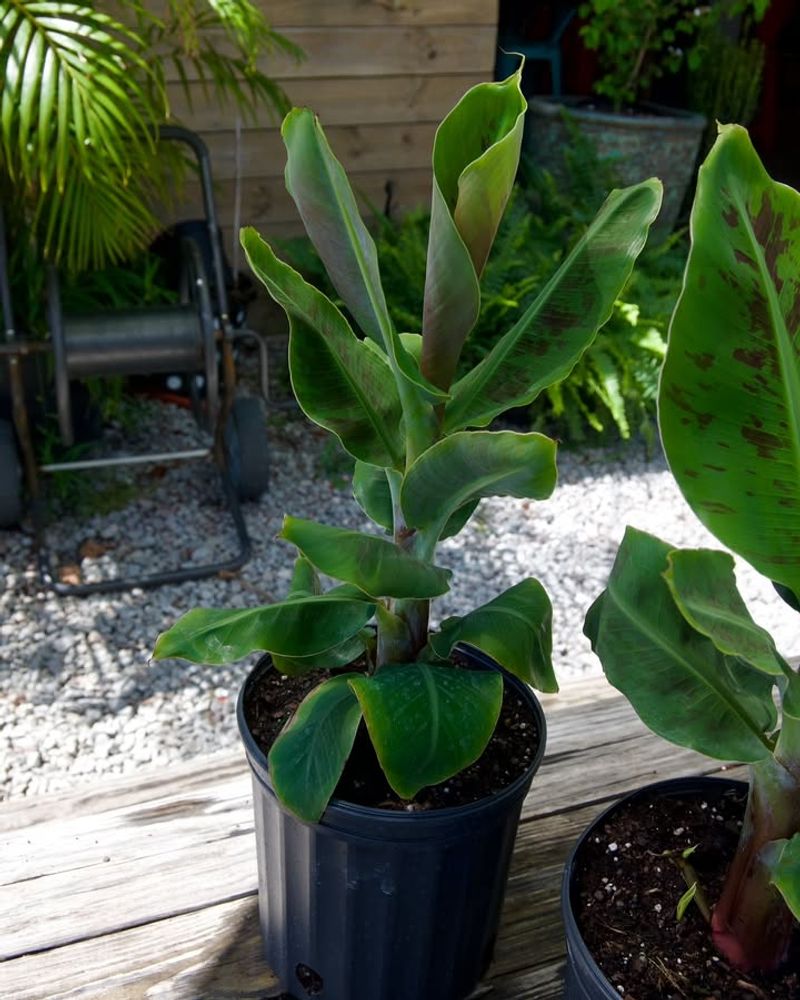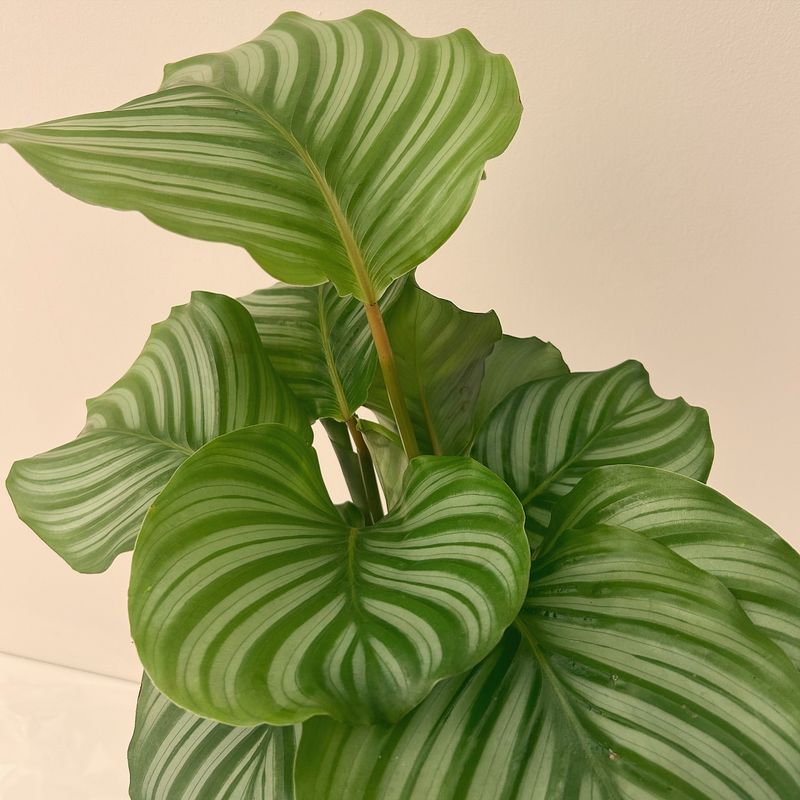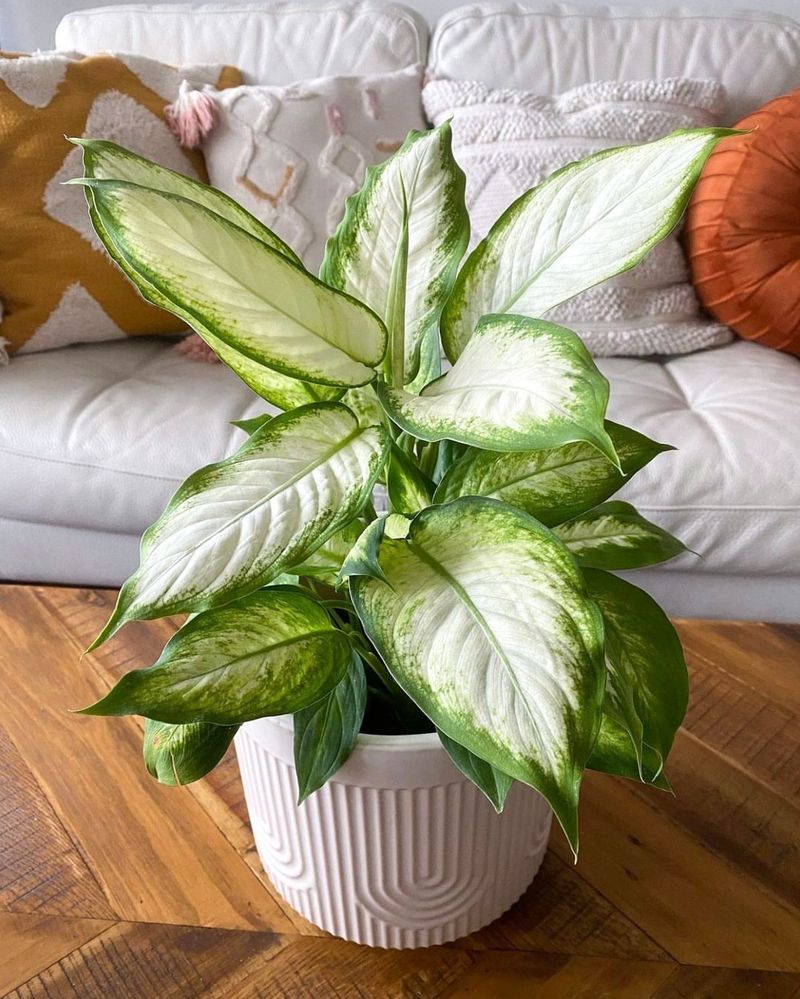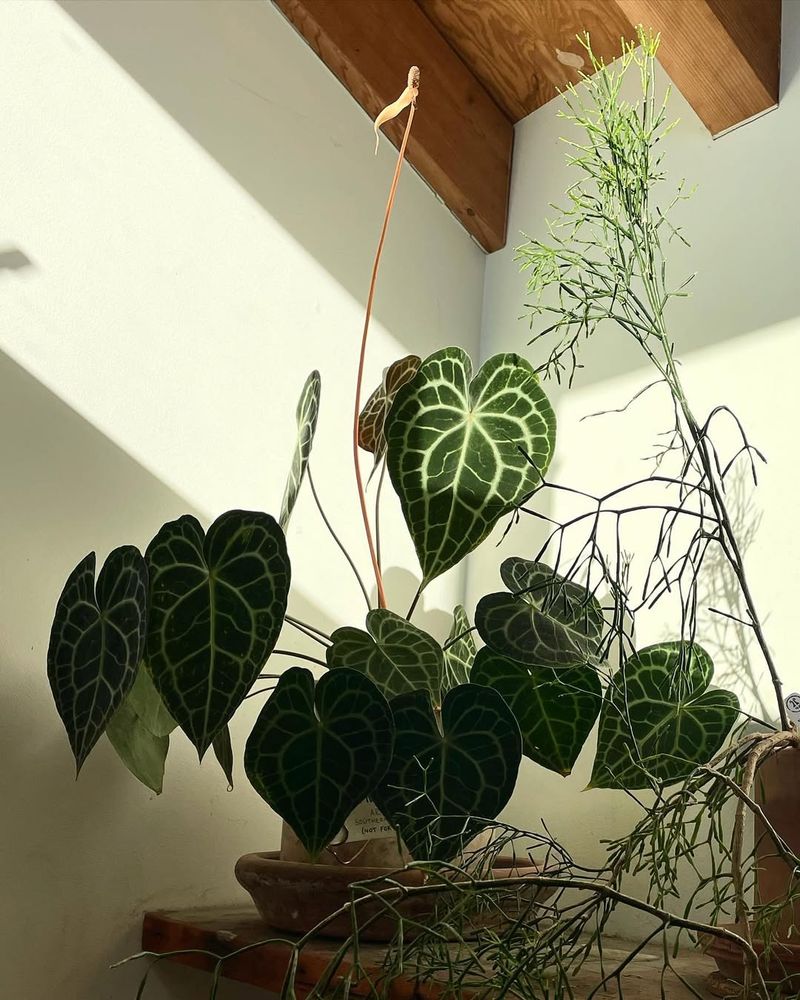Big leaf houseplants have a way of reshaping a room the moment they roll in, turning dull corners into lush showpieces and giving Texas homes a bold, lively feel.
With leaves that fan out, unfurl, and steal the spotlight, these plants bring a touch of drama that regular greenery can’t match. Add a few of these statement makers to your space and your home starts to feel more vibrant, stylish, and full of life.
1. Monstera Deliciosa
With its dramatic split leaves that look like nature carved them with scissors, Monstera Deliciosa instantly becomes the star of any room. People often call it the Swiss Cheese Plant because of those unique holes and cuts in the foliage.
This tropical beauty loves bright, indirect sunlight and can handle Texas humidity like a champ. Water it when the top two inches of soil feel dry, usually once a week during hot months.
As it grows taller, provide a moss pole for support and watch those leaves get bigger and more fenestrated over time.
2. Fiddle Leaf Fig
Standing tall like a sculpture, the Fiddle Leaf Fig brings sophistication with its glossy, violin-shaped leaves that can grow up to 15 inches long. Interior designers absolutely adore this plant for creating dramatic focal points in living spaces.
Place yours near an east or west-facing window where it gets plenty of filtered light throughout the day. Texas heat means checking soil moisture regularly—these plants prefer consistent watering without sitting in soggy soil.
Wipe those big leaves monthly to remove dust and keep them breathing properly.
3. Bird Of Paradise
Imagine bringing a slice of Hawaii right into your Texas living room! Bird of Paradise plants feature enormous paddle-shaped leaves that fan out majestically, sometimes reaching five feet tall indoors.
These sun-lovers thrive in bright light and actually appreciate those intense Texas rays coming through south-facing windows. During summer, water generously to keep soil evenly moist, but reduce frequency when temperatures cool down.
Fun fact: With enough light and patience, mature plants might reward you with stunning orange and blue flowers that really do resemble tropical birds.
4. Elephant Ear Plant
Named for leaves that truly rival elephant ears in size, this showstopper can produce foliage over two feet wide under the right conditions. Alocasia and Colocasia varieties both fall under this category, each offering slightly different leaf patterns and colors.
High humidity makes these plants happiest, so misting regularly or using a pebble tray helps them thrive in air-conditioned Texas homes. Keep soil consistently moist but never waterlogged, especially during active growing seasons.
Watch for new leaves unfurling—it happens surprisingly fast and feels magical every single time.
5. Rubber Plant
Rubber Plants earn their spot on this list with thick, waxy leaves that shine like they have been polished. Originally from Southeast Asia, these hardy plants adapt beautifully to Texas indoor environments and forgive occasional watering mistakes.
Varieties range from deep burgundy to variegated cream and green, letting you match your home decor perfectly. Bright, indirect light keeps them growing steadily without stretching or losing lower leaves.
Clean those glossy leaves every few weeks, and rotate your plant quarterly so all sides develop evenly and maintain that full, lush appearance.
6. Philodendron Selloum
Also known as Tree Philodendron, this variety produces deeply cut leaves that spread outward like green fireworks frozen in time. Each leaf can span over three feet, creating an impressive canopy that fills empty corners beautifully.
Unlike climbing philodendrons, this self-heading type grows upright without needing support structures or trellises. Medium to bright indirect light suits it perfectly, and it tolerates lower light better than many large-leafed cousins.
Water thoroughly when the top inch dries out, and fertilize monthly during spring and summer for maximum lushness and growth.
7. Banana Plant
Yes, you really can grow banana plants indoors in Texas! Dwarf varieties like Dwarf Cavendish produce those classic long, tropical leaves that make you feel like you are vacationing year-round.
These fast growers need lots of bright light—the more, the better—and appreciate the warmth Texas provides naturally. Keep soil consistently moist during growing season, and feed every two weeks with diluted fertilizer to fuel that rapid growth.
While indoor fruiting remains rare, the lush foliage alone transforms spaces into tropical retreats that transport you somewhere far more exotic than your zip code.
8. Calathea Orbifolia
Sporting silvery-green stripes painted across huge, round leaves, Calathea Orbifolia looks almost too beautiful to be real. Each leaf can grow nearly a foot wide, creating stunning visual impact without taking up massive floor space.
Prayer plants like this one fold their leaves upward at night, which never stops being fascinating to watch. They prefer filtered light and higher humidity, making bathrooms with windows ideal Texas locations.
Use distilled or filtered water to prevent brown leaf edges, and keep soil lightly moist but never soggy for healthiest growth and coloring.
9. Dieffenbachia
Commonly called Dumb Cane, Dieffenbachia produces bold leaves splashed with cream, white, and various shades of green in eye-catching patterns. These forgiving plants tolerate a range of lighting conditions, though brighter spots produce more vibrant variegation.
Growth happens quickly during warm Texas months, sometimes adding several new leaves weekly when conditions align perfectly. Water when the top inch of soil dries, and wipe leaves occasionally to showcase those gorgeous patterns.
Keep away from curious pets and children since the sap causes irritation—beauty and caution go hand-in-hand with this stunning variety.
10. Anthurium Clarinervium
Heart-shaped leaves with brilliant white veining make Anthurium Clarinervium look hand-painted by an artist obsessed with symmetry. The velvety texture adds another sensory dimension that photographs simply cannot capture fully.
These anthuriums prefer chunky, well-draining soil mixes similar to orchid media rather than standard potting soil. Bright, indirect light and consistent humidity keep those leaves developing their signature bold veining patterns.
Water when the top layer feels dry, usually weekly, and consider grouping with other humidity-loving plants to create a beneficial microclimate in your Texas space.

